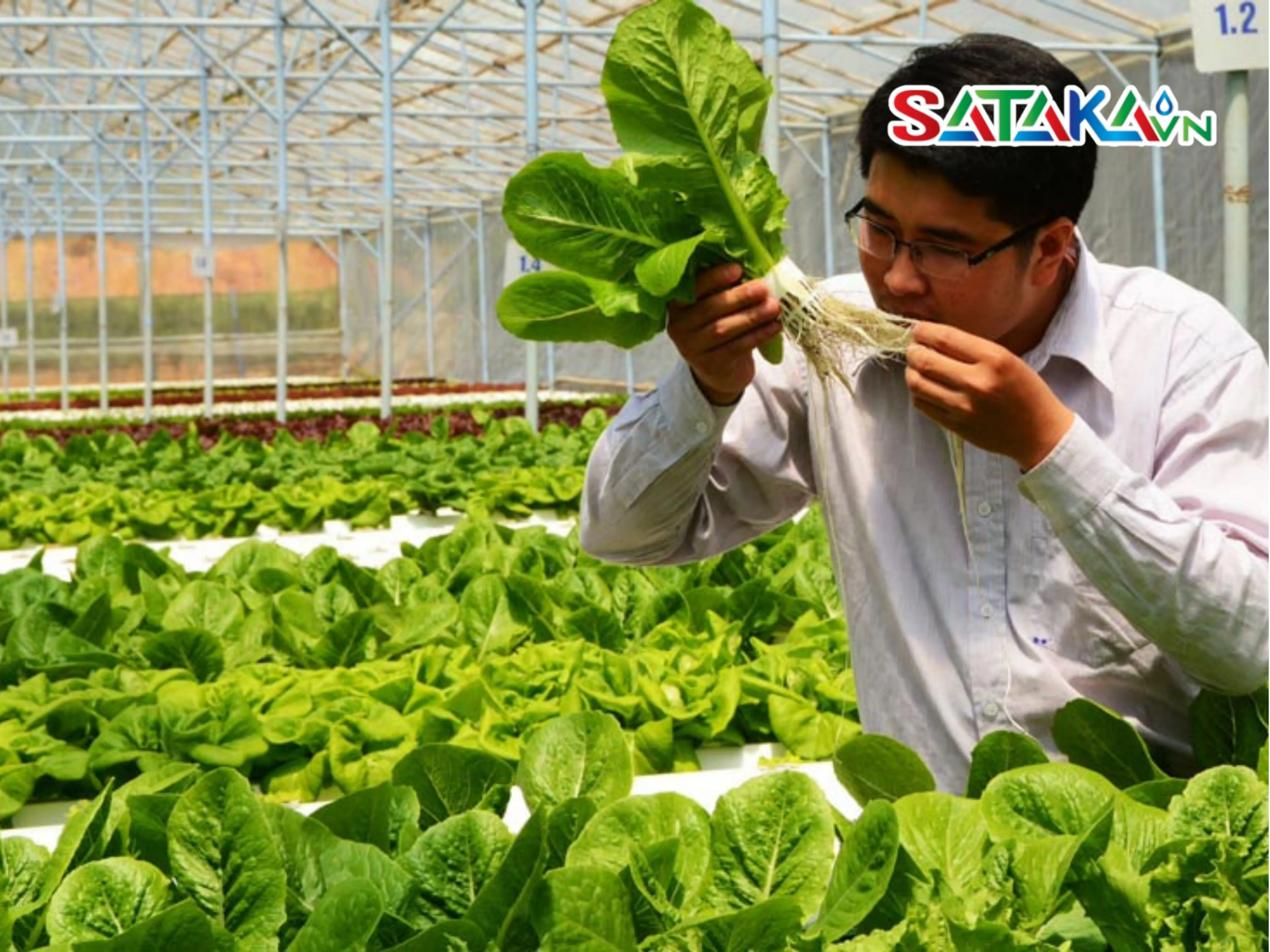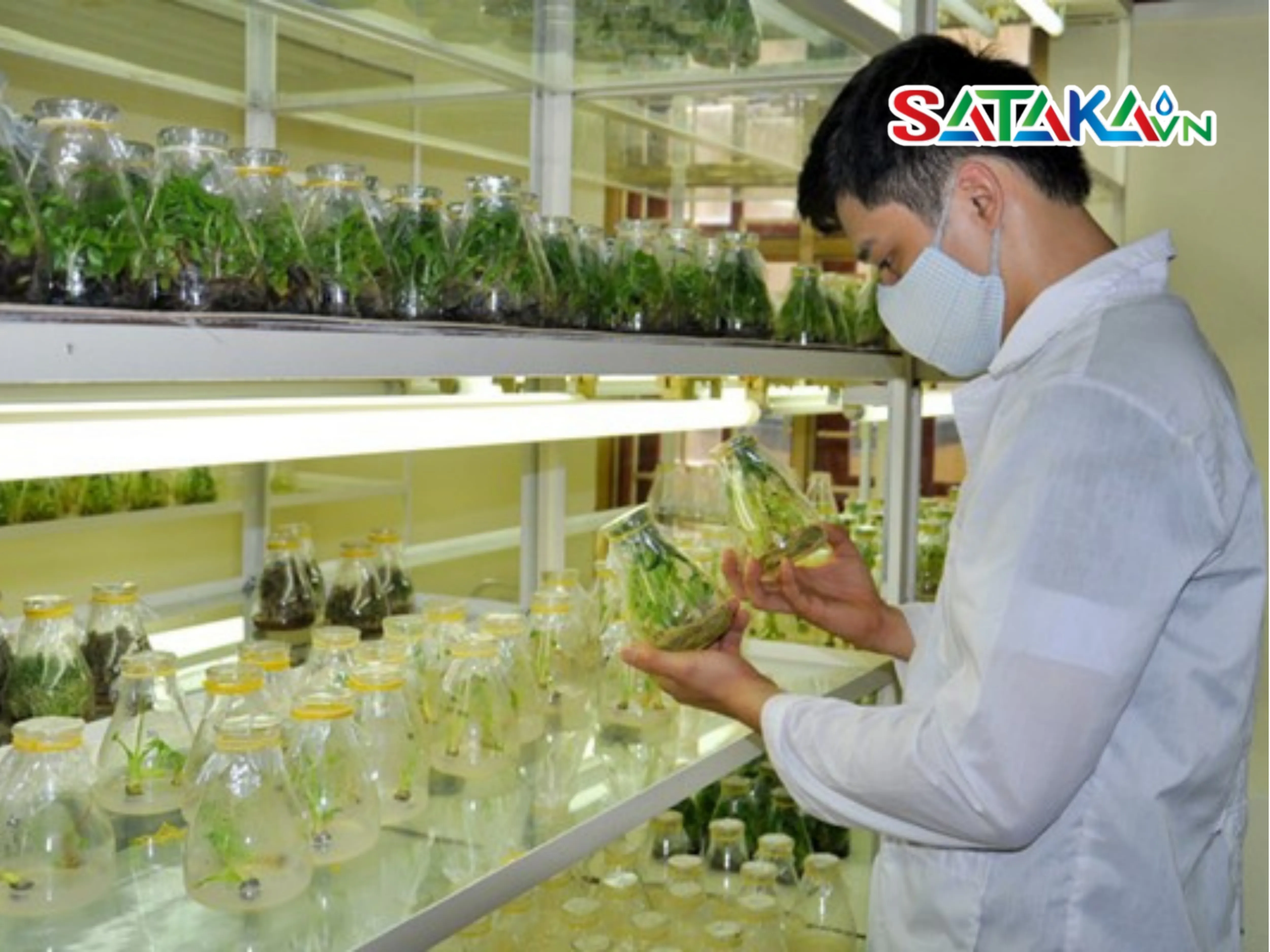GAP cultivation techniques ensure safe, high-quality, and sustainable farming practices. By applying Sataka’s trusted solutions, farmers enhance productivity, protect the environment, and meet strict market standards. This sustainable approach secures long-term agricultural success and delivers healthier products for consumers worldwide.
GAP cultivation techniques (Good Agricultural Practices) cultivation techniques are becoming an undeniable trend in modern farming. This method ensures clean, safe, and sustainable agricultural products, meeting the strict standards of both domestic and international markets. For farmers, farms, and agricultural input distributors, applying GAP not only improves product quality but also creates a solid competitive advantage. Sataka – a pioneer in the agricultural sector – always accompanies farmers in effectively applying GAP techniques, moving toward clean and sustainable agriculture.
1. Overview of GAP Cultivation Techniques
GAP is a set of principles and procedures applied during production, harvesting, preliminary processing, and packaging to ensure safety, quality, and sustainable agricultural development.
1.1. What is GAP? Common GAP Standards in Vietnam
GAP (Good Agricultural Practices) is a set of agricultural production standards designed to ensure food safety, environmental protection, social welfare, and traceability.
In Vietnam, several GAP standards are applied:
-
VietGAP: Vietnam’s standard for good agricultural practices, suitable for domestic production conditions.
-
GlobalGAP: An international standard often applied to exported products.
-
AseanGAP: GAP standard for the Southeast Asian region.
Each standard has specific requirements, but all share the goal of ensuring food safety and sustainable development.
1.2. Benefits of Applying GAP Cultivation Techniques
Adopting GAP cultivation techniques brings multiple practical benefits:
- Improves the quality and value of agricultural products
- Reduces risks related to food safety
- Enhances access to premium domestic and international markets
- Minimizes negative impacts on the environment
- Increases economic efficiency through better resource management
- Improves working conditions and welfare for laborers
For farmers, applying GAP also helps reduce long-term production costs and build a trustworthy brand in the market.

Overview of GAP Cultivation Techniques.
2. Conditions and Preparations Before GAP Cultivation
Proper preparation is crucial for the successful application of GAP cultivation techniques.
2.1. Selecting and Treating Soil to Standard
Soil must meet the following requirements:
-
Location: Far from pollution sources (landfills, industrial zones, highways)
-
Land-use history: Not previously contaminated with toxic chemicals
-
Soil analysis: Check pH, heavy metals, microorganisms
-
Soil treatment: Use biological methods (composting, crop rotation), minimize chemical use
All soil treatments must be recorded in farm logs for traceability.
2.2. Ensuring Safe, Clean Irrigation Water
Water is a key factor in GAP farming:
- Regularly test water quality (microorganisms, heavy metals, pesticide residues)
- Use water-saving irrigation systems (drip, mist)
- Avoid untreated wastewater
- Install filtration systems if needed
- Keep water quality inspection records
2.3. Choosing GAP-Certified Plant Varieties
Seed and plant material must comply with:
- Certified varieties with clear origins
- Preference for pest-resistant and locally adaptable varieties
- No use of genetically modified varieties unless authorized
- Proper recordkeeping of origins and certifications
Selecting the right varieties ensures productivity and reduces pesticide use.
3. GAP Cultivation Techniques
Strict compliance at each stage ensures high-quality GAP products.
3.1. Fertilization and Soil Preparation
Fertilizers play a vital role in GAP farming:
-
Organic fertilizers: Well-composted manure, bio-fertilizers, organic products
-
Inorganic fertilizers: Only use government-approved inputs with clear origins
-
Dosage: Follow manufacturer or extension service recommendations
-
Timing: Adjust according to crop growth stages
-
Recordkeeping: Document fertilizer type, dosage, and application time
Proper fertilization ensures yield while minimizing environmental impact and production costs.
3.2. Planting and Crop Care by Growth Stage
Crop care under GAP includes:
-
Plant density: Maintain suitable spacing, avoid overcrowding
-
Irrigation: Apply efficient irrigation systems, maintain adequate soil moisture
-
Weeding: Prefer manual/mechanical control, minimize herbicides
-
Pruning and canopy management: Apply techniques suited to each crop
-
Growth monitoring: Record plant development data regularly
These practices strengthen crops, improve natural resistance to pests and diseases.
3.3. Harvesting, Processing, and Storage under GAP
Post-harvest handling is decisive for product quality:
-
Harvest timing: At full physiological maturity, outside pesticide pre-harvest intervals
-
Harvest method: Hygienic handling, avoid bruising
-
Processing: In clean facilities, using safe water
-
Packaging: Use food-safe, crop-appropriate materials
-
Transport: Use sanitary vehicles at proper temperatures
-
Traceability: Label with full product batch details
This ensures high-quality produce with extended shelf life.

GAP Cultivation Techniques.
4. Pest and Disease Management in GAP
Pest control is one of the greatest challenges in GAP farming, requiring integrated and scientific approaches.
4.1. IPM (Integrated Pest Management) Principles
IPM practices in GAP include:
-
Prevention: Use resistant varieties, crop rotation, field sanitation
-
Monitoring: Regular field inspections for early detection
-
Economic threshold: Apply control only when necessary
-
Combination of measures: Favor biological and cultural methods before chemicals
-
Natural enemies: Protect and encourage beneficial organisms
IPM significantly reduces pesticide use, protecting both environment and consumer health.
4.2. Proper Use of Biological and Chemical Pesticides
When pesticides are needed:
- Only use government-approved pesticides, prioritizing biological or botanical ones
- Follow label instructions on dosage and application
- Strictly respect pre-harvest intervals
- Store pesticides safely, away from water and food
- Collect and dispose of empty containers responsibly
- Keep detailed application records
Safe pesticide use ensures effective control while protecting producers and consumers.
5. GAP Models and Success Stories in Vietnam
Several GAP cultivation models in Vietnam have proven successful, offering valuable lessons.
5.1. Aeroponic and Hydroponic GAP-Certified Vegetable Models
Increasingly adopted in major cities:
-
Advantages: Controlled environment, fewer pests, water-efficient
-
Suitable crops: Leafy vegetables, tomatoes, cucumbers
-
Systems: Recirculating water and nutrients, high automation
-
Costs: High initial investment, long-term efficiency
-
Markets: High-end segments, hotels, restaurants
Examples include GAP-certified farms in Ho Chi Minh City, Hanoi, and Da Lat.
5.2. Practical Lessons from Successful Farms and Cooperatives
Key takeaways include:
-
Workforce training: Proper GAP education for farm workers
-
Detailed records: Farm logs are crucial for traceability and certification
-
Value chain linkages: Connect production to markets
-
Technology adoption: Apply digital tools for management and traceability
-
Gradual transition: Adopt GAP step by step, not all at once
Examples include Tan Phu Safe Vegetable Cooperative (Cu Chi) and VietGAP-certified orange farms in Ham Yen (Tuyen Quang).
See more: Distinguishing Chemical and Biological Pesticides: The Optimal Solution for Plant Protection

GAP Models and Success Stories in Vietnam.
Agricultural distributors are not just suppliers but also vital partners in GAP implementation:
- Provide certified inputs (seeds, fertilizers, pesticides)
- Offer technical guidance and correct input usage
- Organize training and workshops on GAP techniques
- Connect farmers with GAP product markets
- Support certification processes
Sataka consistently supports farmers by providing comprehensive GAP solutions – from quality inputs to professional technical advice.
GAP cultivation techniques are an inevitable trend in modern agriculture, bringing sustainable value for producers and safe products for consumers. While adopting GAP requires investment in knowledge, technology, and resources, the long-term economic, environmental, and social benefits are well worth it.
With the professional support of units like Sataka – a provider of comprehensive sustainable farming solutions, the transition to GAP cultivation becomes easier and more effective, contributing to the sustainable development of Vietnamese agriculture.
SATAKA VIETNAM JOINT STOCK COMPANY
Address: 246 Nguyen Kim Cuong, Tan Thanh Dong Commune, Cu Chi District, Ho Chi Minh City
Hotline: 0856.555.585 | 0789.917.927
Website: https://sataka.com.vn/


